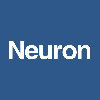Septal Cholinergic Neuromodulation Tunes the Astrocyte-Dependent Gating of Hippocampal NMDA Receptors to Wakefulness
Papouin T, etc
Neuron,
2017
The activation of the N-methyl D-aspartate receptor (NMDAR) is controlled by a glutamate-binding site and a distinct, independently regulated, co-agonist-binding site. In most brain regions, the NMDAR co-agonist is the astrocyte-derived gliotransmitter D-serine. We found that D-serine levels oscillate in mouse hippocampus as a function of wakefulness, in vitro and in vivo. This causes a full saturation of the NMDAR co-agonist site in the dark (active) phase that dissipates to sub-saturating levels during the light (sleep) phase, and influences learning performance throughout the day. We demonstrate that hippocampal astrocytes sense the wakefulness-dependent activity of septal cholinergic fibers through the a7-nicotinic acetylcholine receptor (a7nAChR), whose activation drives D-serine release. We conclude that astrocytes tune the gating of synaptic NMDARs to the vigilance state and demonstrate that this is directly relevant to schizophrenia, a disorder characterized by NMDAR and cholinergic hypofunctions. Indeed, bypassing cholinergic activity with a clinically tested a7nAChR agonist successfully enhances NMDAR activation
- Journal
- Neuron
- Year
- 2017
- Page
- doi: 10.1016/j.neuron.2017.04.021
- Institute
- Tufts University School of Medicine
Referenced Products
| Product | Cat No. |
|---|---|
| AAV-GFAP(0.7)-EGFP-T2A-iCre | VB1131 |
Vector Biolabs
293 Great Valley Parkway
Malvern, PA 19355
Email: info@vectorbiolabs.com
Phone: +1 484-325-5100
Toll-free (US Only): 877-BIO-LABS
Fax: +1 215-525-1112
Privacy Policy

